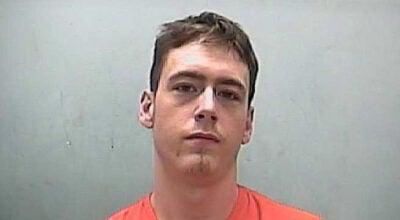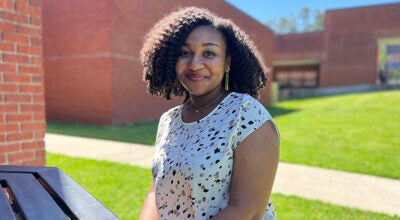Testimony about shaken baby syndrome in Havard hearing continues
Published 12:02 am Wednesday, August 16, 2017
NATCHEZ — A biomedical engineer Tuesday said a 1-foot fall onto the carpet head-first has a higher chance to produce a head injury than violent shaking.
Consultant and Wayne State University professor Chris Van Ee was testifying on behalf of the defense of Jeffrey Havard, who was convicted in 2002 and sent to death row for reportedly shaking to death Chloe Britt, the 6-month-old baby of his girlfriend.
Havard insists he accidently dropped Britt when removing her from the bathtub, causing her to hit her head on the toilet.
Havard’s defense team on day two of the evidentiary hearing continued laying out the plausibility of an accidental fall, not violent shaking, as potentially killing Britt.
The defense also continued to present testimony showcasing the science on shaken baby syndrome has evolved since Havard was convicted 15 years ago.
The Mississippi Supreme Court ordered the hearing in Circuit Court Judge Forrest “Al” Johnson’s court for Havard, now 38, to determine if a new trial is warranted based on shifting beliefs in the medical community about shaken baby syndrome.
During the 2002 trial, medical examiners and physicians testified Britt definitively died of shaken baby syndrome and offered no other potential cause of death.
On Monday, Dr. Steven Hayne, who conducted the 2002 autopsy and whose testimony prosecutors used to help send Havard to death row, said Britt’s death is not purely a shaken baby syndrome case due to the injuries to the head.
Van Ee on Tuesday said the data produced over the last 15 years indicates a baby being shaken violently falls under the threshold where medical experts would expect a 6-month- to 1-year-old baby to suffer a head injury.
“That does not mean that shaking is a good thing,” Van Ee said. “It is horrible. It is abuse.”
Van Ee said the force generated on a crash-test dummy from a 3-foot fall onto a hard surface is similar to the level of force generated in a car accident in which a child could potentially die.
If Britt fell and hit her head on the porcelain toilet, Van Ee said the force could produce the injuries shown in the autopsy.
“A fall is the more logically scientific thing to grab hold of,” Van Ee said. “That makes more sense than the violent shaking testified to at the trial.”
Brad Smith, working with the Mississippi Attorney General’s office, said the neck of a crash-test dummy does not perfectly mimic that of a 6-month old child.
Van Ee said bio-medical engineers certainly need to understand the limitations of the tool and also the differences. Van Ee said it is still a useful tool.
Pediatric forensic pathologist Janice Ophoven, also called by the defense, said no evidence exists to show Britt’s death is a child abuse case. The Woodbury, Minn., pathologist also said violent shaking as a cause of fatal brain damage is no longer an accepted scientific conclusion.
Ophoven said she did not support Hayne’s original conclusion of shaken baby syndrome causing Britt’s death. Ophoven said Hayne based his decision on three factors — blood between the skin and skull, blood in the eyes and the absence of another cause of death.
“He is basically saying nothing means something,” she said. “That is not how you do it.”
Ophoven said it was common in 2002 for doctors to reject that a short fall could generate the force to kill a person. Ophoven said that’s changed in the medical community more recently.
Within a reasonable degree of medical certainty based off reviewing the case, Ophoven concluded that “Chloe died from the complication of (lack of oxygen) to the brain, associated with a history of a fall.”
Johnson said he expects the hearing to wrap up today with the conclusion of Van Ee’s testimony, a witness from the state and the possible recalling of Hayne for additional testimony. The hearing will continue at 8:30 a.m. today
Johnson has said he does not intend to make a decision on whether Havard would receive a new trial or not until a later date.





